Blog
Discover the four layers of the forest—and the animals living in it
Read more20 of the most endangered animals in Africa
Africa’s flora and fauna make up about one quarter of the planet’s biodiversity. The continent is home to many of the world’s most recognisable animals, including lions, wildebeests, giraffes, cheetahs, and hippopotamuses. And it has a greater variety of hoofed mammals and freshwater fish than any other continent on Earth.
Unfortunately, however, many of its species are threatened, endangered, and critically endangered—and others have already gone extinct.
At IFAW, we’re working with communities in Africa to protect habitats and wildlife. With the help of rangers, we’re combatting poaching and wildlife crime. We’re supporting wildlife conservancies and enabling communities and wildlife to live peacefully alongside one another.
IFAW is dedicated to protecting endangered and vulnerable species, like the ones on this list. Here are 20 of the most endangered animal species in Africa and the threats to their survival.
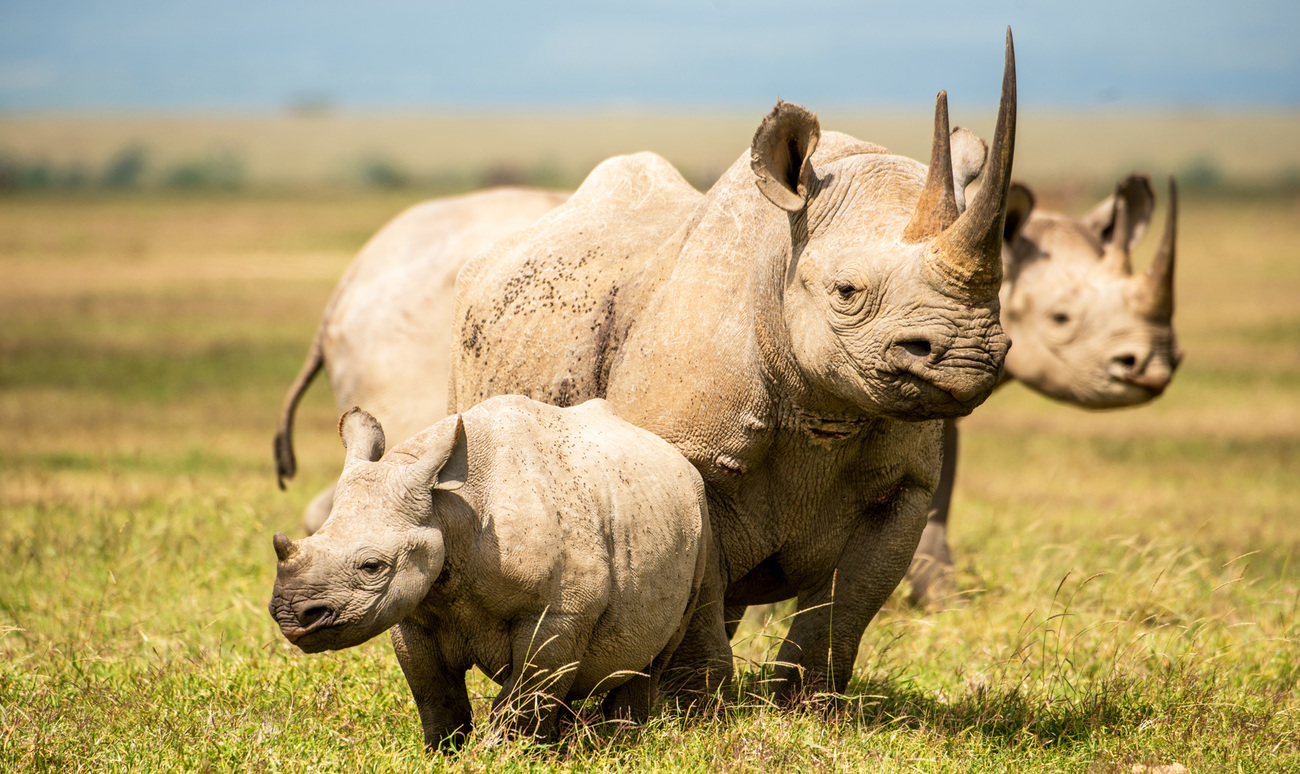
The black rhino (Diceros bicornis) is a critically endangered rhino species native to Sub-Saharan Africa. In 2025, there are an estimated 6,421 remaining black rhinos. Sadly, the species has gone extinct in much of its range. Today, the black rhino is only found as far north as Kenya. The black rhino is grey in color and has two horns.
Poaching wiped out 98% of the black rhino population between 1960 and 1995 and still poses a major threat to these animals. Habitat loss and climate change are also issues for this species.
Both gorilla species, the eastern gorilla (Gorilla beringei) and western gorilla (Gorilla gorilla), are critically endangered. Found in the Democratic Republic of the Congo, Uganda, and Rwanda, the eastern gorilla has an estimated population of 2,600 mature individuals. One of its two subspecies, the mountain gorilla, has only 600 mature individuals remaining.
The western gorilla, found in Angola, Cameroon, Central African Republic, Republic of the Congo, Equatorial Guinea, Gabon, and Nigeria, has a decreasing population. One subspecies of the western gorilla, the Cross River gorilla, has only 100 to 250 individuals remaining. Exact population numbers for the other subspecies, the western lowland gorilla, are unknown, but it is also critically endangered.
Threats to gorillas include habitat loss, disease spread from humans, and hunting for bushmeat.
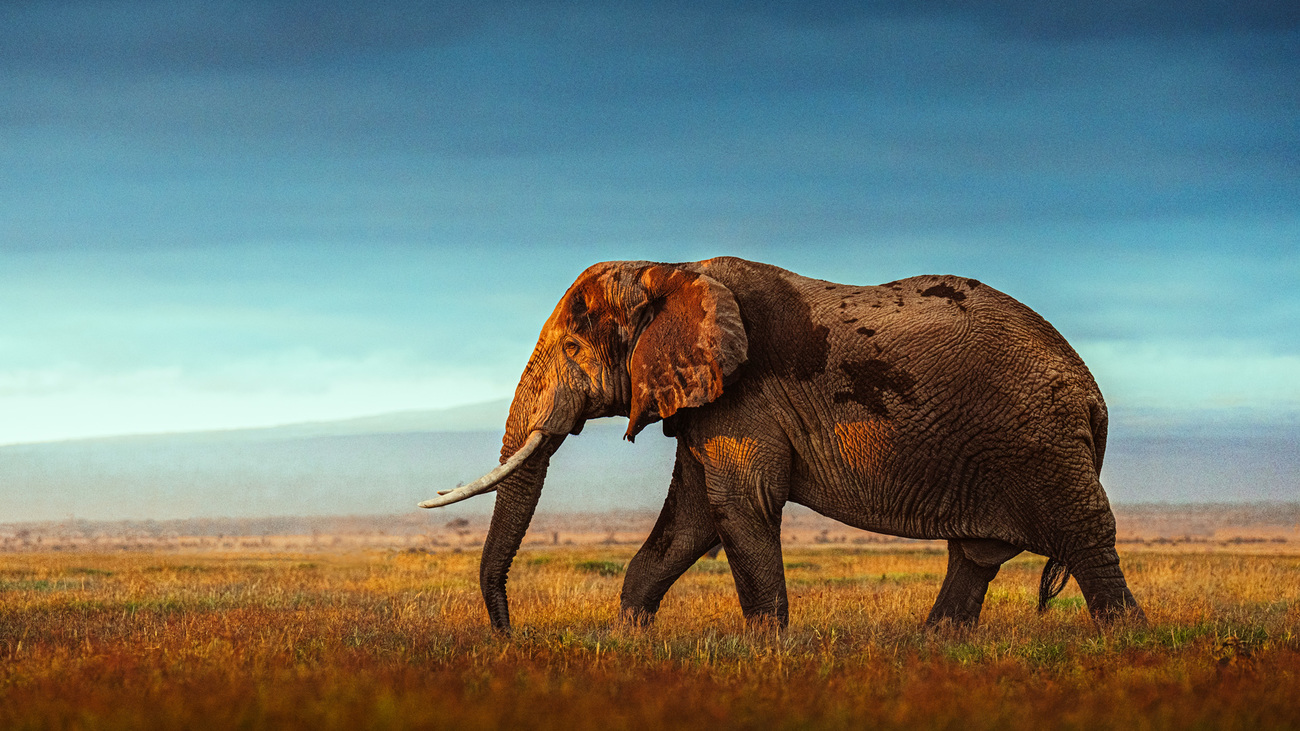
African forest elephants (Loxodonta cyclotis) and African savannah elephants (Loxodonta africana) are two of the largest land animals in the world. The African forest elephant, native to West and Central Africa, is critically endangered. Found across Sub-Saharan Africa, the African savannah elephant is endangered. They are two of the three elephant species found on the planet, and they are in danger of extinction.
These elephants' primary threats include poaching due to the illegal trade of their tusks, habitat loss, and human-wildlife conflict. Coupled with their slow reproduction speed, these species face a difficult path to recovery.
Through IFAW’s Room to Roam initiative, we are working to protect elephants and their habitats in Africa. Working with local partners, we support an elephant nursery in Zambia, where elephant calves orphaned by poaching and other threats are rescued, rehabilitated, and returned to the wild, and another nursery in Zimbabwe. We also work to protect key elephant migration and dispersal areas, enabling safe passage for elephants in their home ranges.
The Atlantic humpback dolphin (Sousa teuszii) lives along the west coast of Africa. There are only about 1,500 mature Atlantic humpback dolphins remaining in the wild. These critically endangered marine mammals are known for the distinctive hump on their back below their dorsal fin and their elusive personality. However, not much else is known about the Atlantic humpback dolphin. Despite its tendency to avoid humans, bycatch and entanglement pose major threats to the species, as does human-caused habitat degradation.
As part of our marine conservation work around the world, IFAW helps protect marine mammals like the Atlantic humpback dolphin. We’re helping to establish locally managed marine areas (LMMAs) along Kenya’s coastline and making the ocean a safer place for animals by reducing vessel speeds.
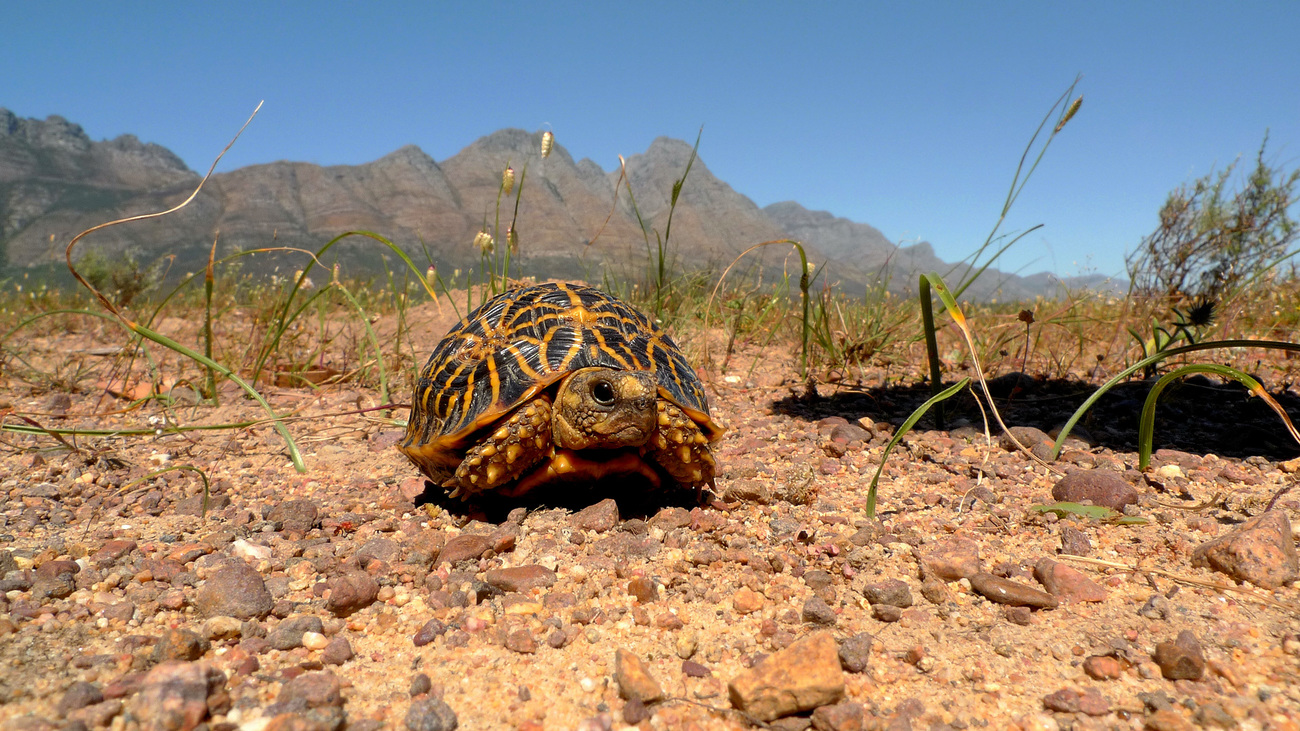
The geometric tortoise (Psammobates geometricus) is a critically endangered tortoise species native to South Africa. It has a beautiful yellow-and-black geometric pattern on its shell. In 2025, there are only about 800 mature geometric tortoises left, and they face threats of habitat alteration, degradation, and destruction due to human activity.
Also known as the white antelope or screwhorn antelope, the addax (Addax nasomaculatus) is a critically endangered grazing antelope with spiral-shaped horns native to the Sahara Desert. Unfortunately, their numbers are severely dwindling. There are only around 30 to 90 mature addaxes remaining in the wild. An aerial survey in March 2016 found only three living individuals and the remains of others left by poachers. Years of uncontrolled hunting, military activity, and oil production are among the reasons for addaxes’ decline.
Also known as the African wild ass, the African wild donkey (Equus africanus) is thought to be the domesticated donkey’s ancestor. This critically endangered species is native to deserts and arid areas of the Horn of Africa region, and as members of the genus Equus, they are close relatives of all horses, donkeys, and zebras. They bear a minor resemblance to zebras due to the thin black stripes around their white legs, but the rest of their bodies are a light grey to brown colour.
There are 23 to 200 mature African wild donkeys remaining in the wild. These animals face threats from hunting and competition with livestock, as there is a limited supply of food and water.
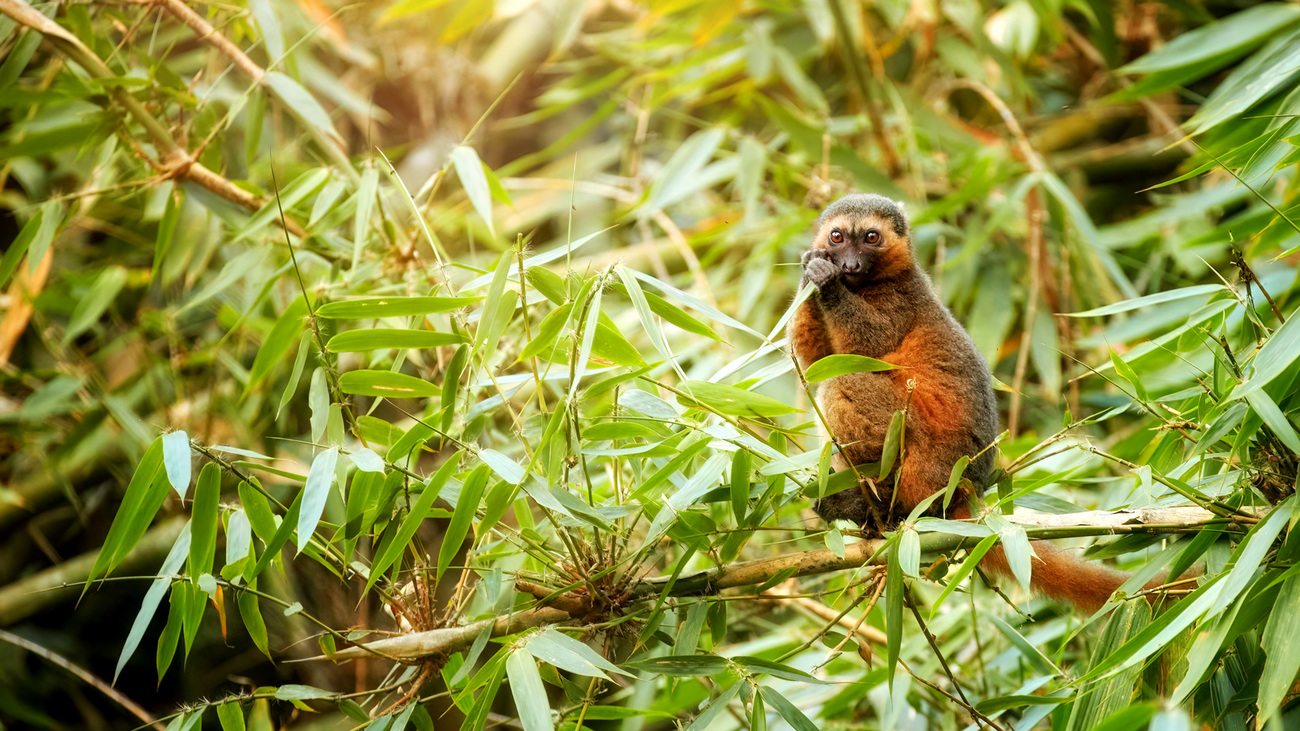
Native to Madagascar, the golden bamboo lemur (Hapalemur aureus) is a critically endangered primate species with brown and golden to orange fur. Bamboo lemurs are also called ‘gentle lemurs’, despite their tendency to be aggressive towards humans when in captivity. They received the name ‘bamboo lemurs’ because of their preference for living around and consuming bamboo.
Sadly, there are fewer than 250 mature golden bamboo lemurs remaining in the wild. They are threatened by slash-and-burn agriculture, as bamboo provides a variety of uses to locals. They also sometimes become trapped in snares.
The Seychelles sheath-tailed bat (Coleura seychellensis) is a critically endangered microbat—a very small bat—native to the Seychelles. On these islands, the clearance of forests and the disturbance of caves sadly threaten this species. Additionally, introduced species like barn owls and feral cats pose the threat of predation. There are only 50 to 100 mature Seychelles sheath-tailed bats left in the wild.
Also known as the bushman rabbit or bushman hare, the riverine rabbit (Bunolagus monticularis) is a critically endangered species found in limited areas of South Africa. In 2025, there are only 157 to 207 mature individuals remaining. Over the last century, 40% to 60% of its floodplain habitat has been lost due to cultivation such as wheat production.
This rabbit is also hunted for bushmeat and for sport, and it can become an accidental victim of traps set for ‘pest’ species. Additionally, climate change has the potential to reduce the riverine rabbit’s remaining habitat by 89%.
The São Tomé grosbeak (Crithagra concolor) is the largest canary species in the world. They are native to the island of São Tomé and are highly elusive. For many years, the only evidence of this critically endangered canary were three 19th-century specimens, before the species was rediscovered in 1991. As of 2025, it’s estimated that there are fewer than 250 of these elusive birds. Cocoa and palm oil plantations have decimated their habitat.
The white-winged flufftail (Sarothrura ayresi) is a critically endangered small bird native to southern Africa. There are sadly fewer than 250 mature white-winged flufftails remaining in the wild. Their marsh habitats are threatened by drainage, flooding by dams, catchment erosion, water abstraction, disturbance, burning, and livestock grazing.
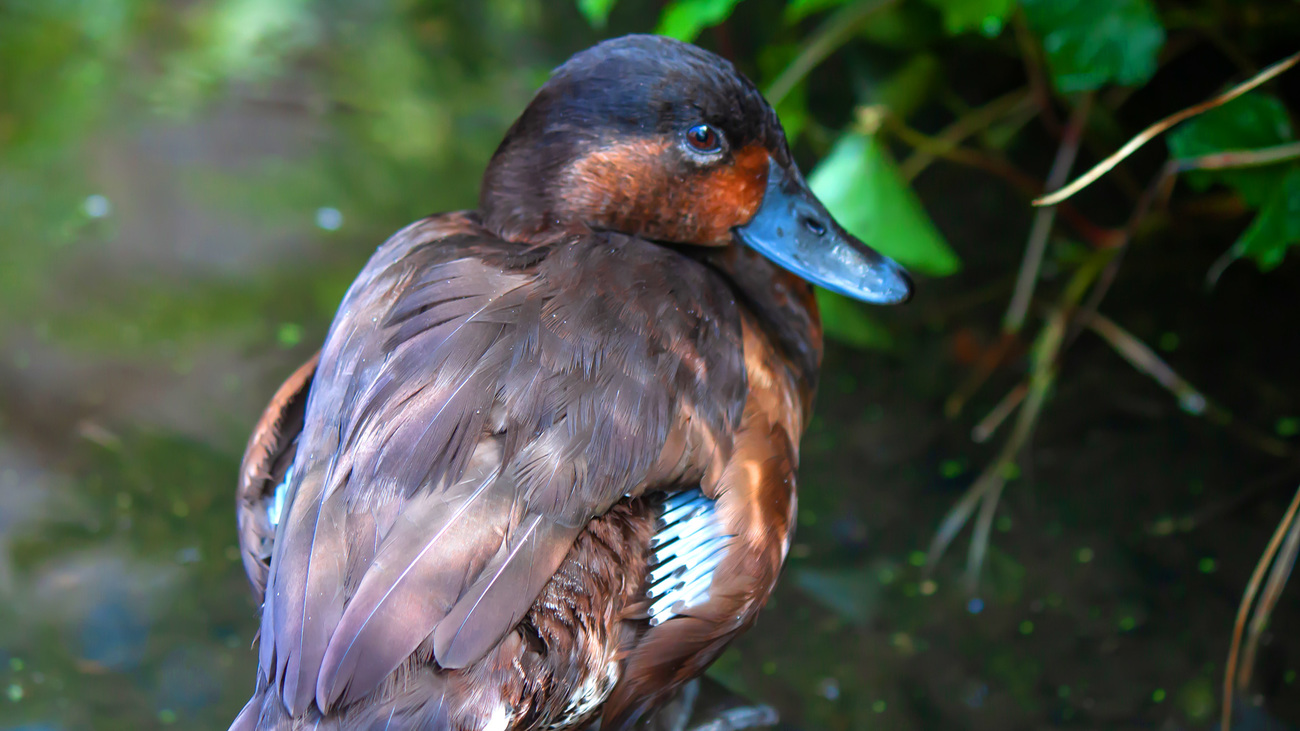
The Madagascar pochard (Aythya innotata) is a critically endangered duck found in a very limited range in Madagascar. There are likely only 30 to 50 of these birds remaining in the wild. The wetlands where they live have been severely degraded by sedimentation, rice growing, introduced fish species, and other forms of human disturbance. Madagascar pochards are also sometimes hunted or caught as bycatch in fishing nets.
Newton’s fiscal (Lanius newtoni), also called the São Tomé fiscal, is a small bird with black, white, and yellow plumage. It’s found only on the island of São Tomé. There are fewer than 250 of these critically endangered birds left. Cocoa and coffee plantations as well as oil exploration have contributed to the deforestation of their habitat.
Recognised by its large nose appendage, the bizarre-nosed chameleon (Calumma hahaha) is critically endangered and occupies a tiny range in northern Madagascar. Its remaining population is severely fragmented, and it’s unknown how many of these reptiles are left in the wild. The major threat to this species is the loss of their humid forest habitat due to slash-and-burn agriculture, logging, fires, honey collection, and cattle grazing.
The krokosua squeaking frog (Arthroleptis krokosua) is a small, critically endangered amphibian native to West Africa. Interestingly, these frogs develop from tadpoles into froglets without hatching from their eggs. There are fewer than 250 mature krokosua squeaking frogs left, as much of their habitat has been lost to wildfires—and what’s left has been severely disturbed by human activities.
Also known as Archer’s lark, the Liben lark (Heteromirafra archeri) is a small bird native to the Horn of Africa region. There are fewer than 250 of these critically endangered birds remaining. They live in grassland habitats, which have experienced degradation due to agriculture, civil unrest, and climate change.
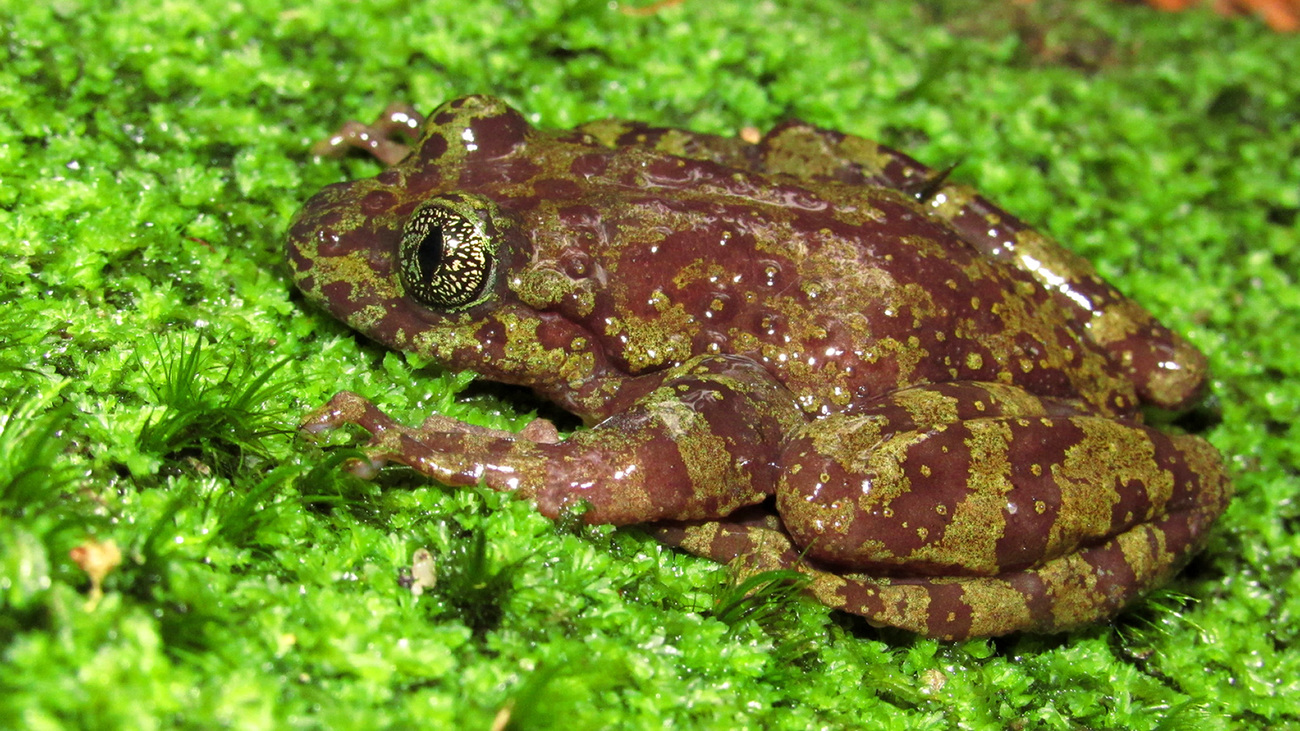
The Table Mountain ghost frog (Heleophryne rosei) is a small frog native to Table Mountain National Park near Cape Town, South Africa. Its population is severely diminished, but it’s unknown how many individuals are left. The main threats this critically endangered frog faces are the spread of alien plants, an increase in the density of woody plants at the expense of grasses and wildflowers, and the presence of water storage reservoirs, which disrupt the flow of natural streams.
The long-billed forest warbler (Artisornis moreaui) is a small, critically endangered bird native to Tanzania. It lives in tropical and subtropical forests, which face pressures due to mining, pole-cutting, cultivation, and firewood collection. There are fewer than 250 mature long-billed forest warblers left in the wild.
The Bale Mountains tree frog (Balebreviceps hillmani) is a stout-bodied frog usually coloured purple or brown with two yellow stripes. Like the krokosua squeaking frog, the eggs of these frogs hatch as smaller versions of the adults rather than as tadpoles. They’re native to a small area of the Mendebo Mountains in Ethiopia.
In 2025, their population is critically endangered and decreasing. The main threat to this species is habitat degradation due to cattle grazing, deforestation, and fencing and settlement development. They also may become threatened by the chytrid fungus that impacts many amphibians around the world.
Endangered species need your help. Support conservation and policies that protect these animals and preserve our planet’s precious biodiversity.
Our work can’t get done without you. Please give what you can to help animals thrive.
Unfortunately, the browser you use is outdated and does not allow you to display the site correctly. Please install any of the modern browsers, for example:
Google Chrome Firefox Safari